Inspirations: The C4 Rice Project
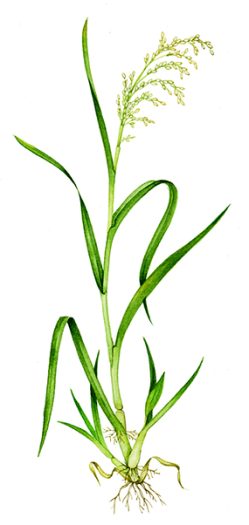
At a recent IAPI meeting on grasses (Institute for Analytical Plant Illustration) we learnt about a really inspiring project from Peter Mitchell. This important project is run by John Sheehy at the International Rice Research Institute, and is trying to make rice use a carbon 4 system rather than a carbon 3 one.
This is the C4 Rice Project, which aims to boost photosynthesis in rice and help feed the poor in developing areas of the world.
The reasons for wanting to develop a rice plant which has “super-charged” photosynthesis are pretty self-explanatory, and we didn’t go into these in our botany meeting. There are an estimated 925 million people who are hungry, many living in areas where rice is a staple crop. If the same area of land could boost rice yield production, then this could help mitigate hunger and provide food security for many people. Developing a new rice plant which could do this might be the answer.
Carbon 3 and Carbon 4 grass types: C3 & C4 types
Peter explained that there are two types of grass, C3 and C4 types. C3 types, such as wheat and barley, are cool season grasses.
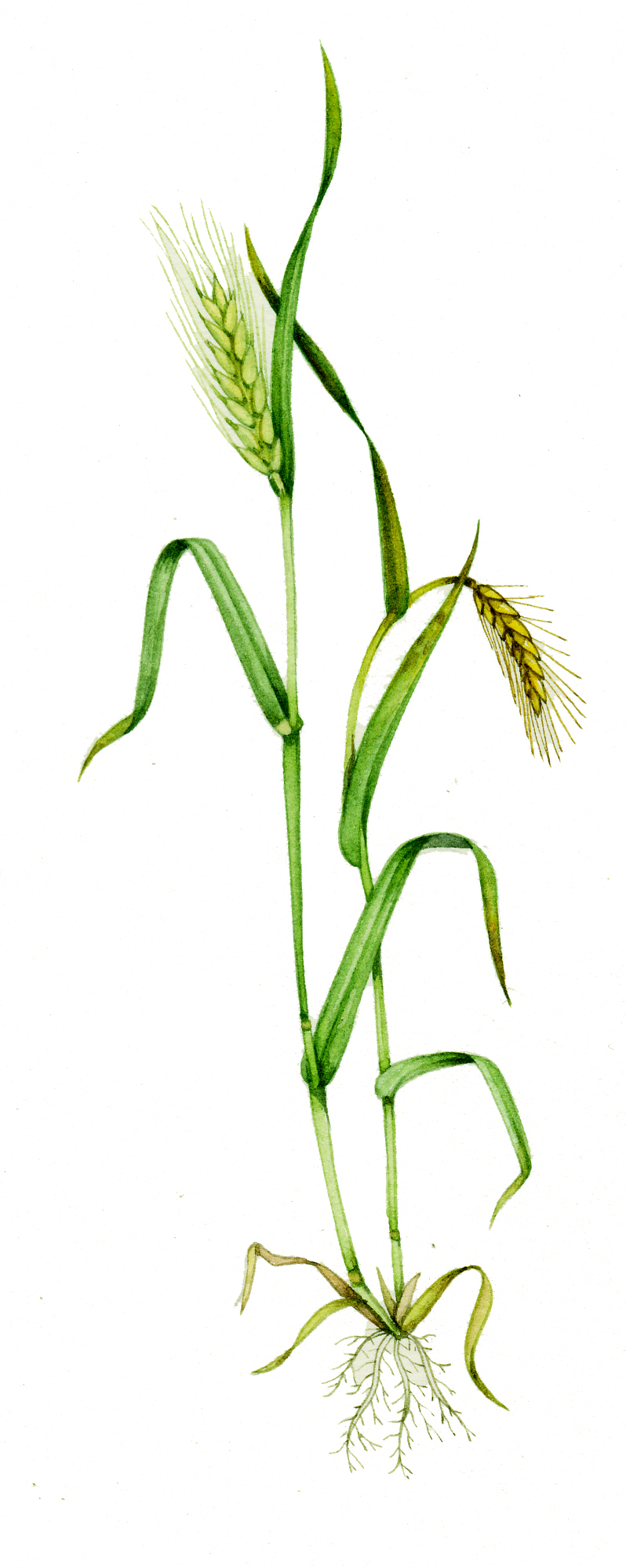
Barley (Hordeum vulgare), a cool-season C3 grass
C3 Grasses
In photosynthesis, these fix CO2 into three-carbon compounds. In cross section (consumately sliced by Peter) these grasses have blocks of green photosynthetic tissue between vascular bundles (veins) at intervals along the section. This is the typical morphology of a three-carbon compound grass:

Rice, a staple crop in many areas afflicted with poverty and hunger, is a C3 grass.
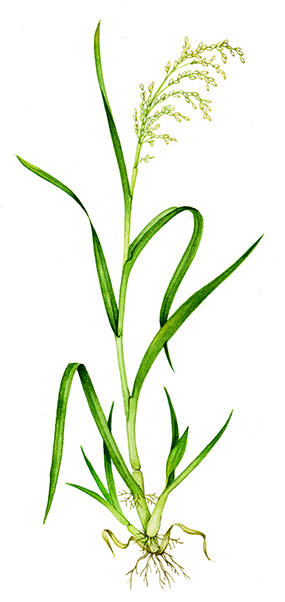
Rice (Oryza sativa), a C3 grass
C4 grasses
The other type of grass is a C4 type. These are warm season grasses, like maize, sorghum and sugar cane.
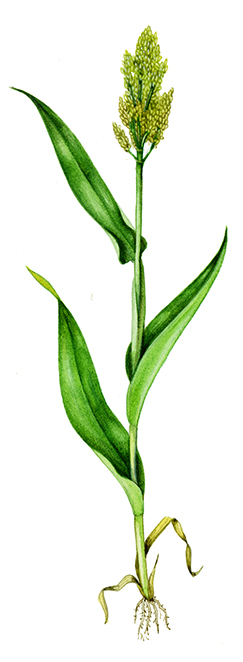
Sorghum (Sorghum bicolor), a C4 grass species
The leaves of C4 grasseslook different in cross section. There are dark green rings around lots of small vascular bundles, which are closely spaced. You can see this in the Panicum cross section below. This is called Kranz anatomy, from the German word for a wreath. Carbon dioxide is fixed into a four-carbon compound, hence the name C4. This C4 compound moves into the dark green ring. Here the carbon dioxide is released and re-fixed by the same mechanism as in C3 plants.
So the C4 system acts as a pump, exactly like a supercharger added to an internal combustion engine. The end result is that C4 plants can process more carbon dioxide per unit of sunlight absorbed. Importantly, they use less nitrogen and water than C3 plants. In crops, this means higher yields from the same area of land.
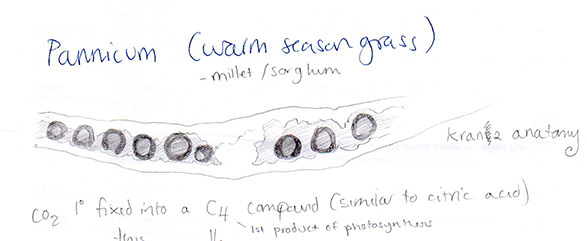
What’s the aim of the C4 Rice project?
The aim of the C4 rice project is to get rice to photosynthesize like a C4 grass. C4 photosynthesis has evolved over and over again in a wide variety of vascular plants. Surely, with scientific advances, and funding from the Gates Foundation, it should be possible to create such a plant?
This theoretical C4 rice plant is something many botanists and geneticists are working towards. Ultimately, the C4 Rice Project wants to “construct prototypes of crop plants with enhanced photosynthesis that can be used by plant breeders in the developing world to improve yield and recource-use efficiency in a sustainable manner”, and “to use science to alleviate hunger in the developing world” (quotes from the C4 Rice Project leaflet).
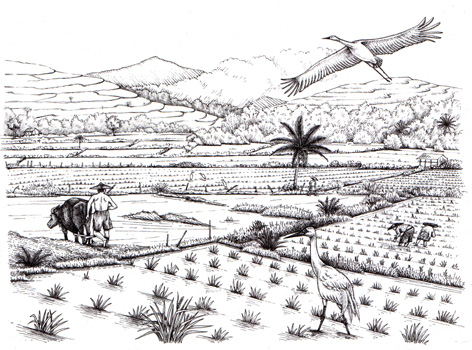
Rice Paddy landscape
I am deeply moved by the ambition and hope of this project. It’s a priviledge to have one of the founding members of C4 Rice research explain it to us. This blog is only a brief introduction to a very inspiring and important project; for more please do visit the C4 Rice Projects’ website.
Many thanks to Peter Mitchell for his input and help with this blog.

